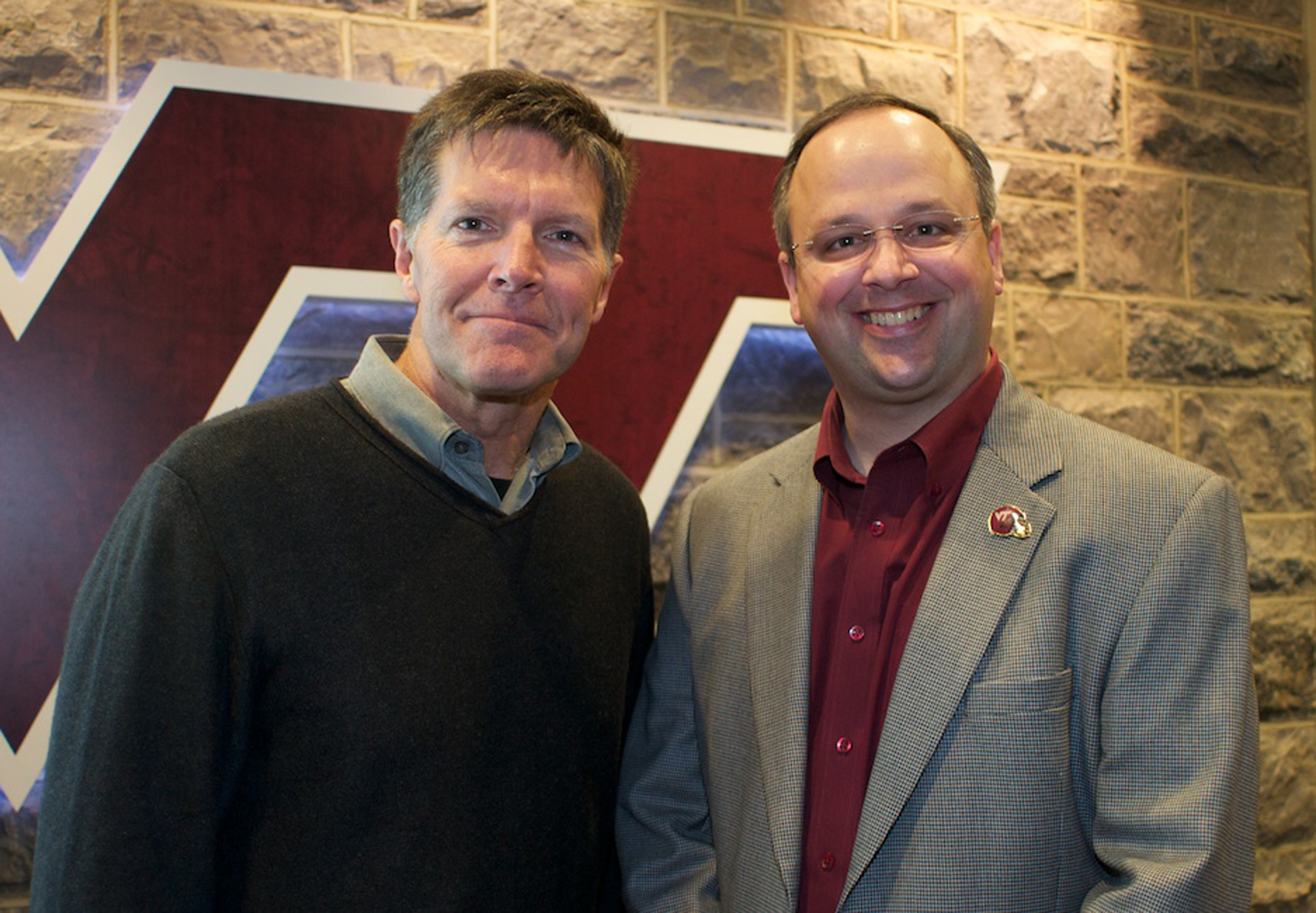Stone Phillips to discuss Stefan Duma's youth football head impact study on 'The View'

Virginia Tech College of Engineering researcher Stefan Duma’s work into making helmets safer against concussions for young football players will be in the national spotlight today as television journalist Stone Phillips brings the story “Hard Hits, Hard Numbers: The First Study of Head Impacts in Youth Football” to ABC’s “The View.”
Phillips, who played as a starting quarterback in high school and at Yale University before becoming a reporter on “Dateline NBC” and ABC’s “20/20,” also is debuting the full “Hard Hits” report on his website. He will show excerpts from the report on the well-known daytime talk show, co-hosted by Barbara Walters, Whoopi Goldberg, Elizabeth Hasselbeck, and others. The report is live today.
“We all know how fierce the hitting is in professional, college, and even high school football,” said Phillips, who suffered two sports-related concussions during his time playing. “For the first time, this study gives hard, sobering numbers on head impacts among the youngest players.”
The Emmy Award-winning journalist taped his exclusive report at Virginia Tech during the week of Jan. 16, talking to Duma, team doctors for the Virginia Tech Hokie football team, and coaches, parents, and young football players of the local Auburn Elementary School, near the university.
In a first-of-its-kind study, Duma and his research team from the Virginia Tech–Wake Forest University School of Biomedical Engineering and Sciences provided new helmets, outfitted with special impact sensors, to the 7- and 8-year-old players of the Auburn football team.
During the course of one season, Duma and his research team, including Dr. Gunnar Brolinson, of the Edward Via College of Osteopathic Medicine, collected data on more than 750 hits to the head that the young players sustained.
The findings were startling.
Some of impacts endured by the children, around the age of third grade, reached magnitudes considered high even for college players. The highest recorded impact was measured at 100-g, as in gravitational force, the measurement associated with an object in its acceleration relative to free-fall. Concussion territory, according to Duma, Virginia Tech professor of biomedical engineering and head of the School of Biomedical Engineering and Sciences.
Another significant fact of the federally-funded study: Most of the highest head impacts were recorded during practice.
The findings by Duma and his research team provide the first quantitative assessment of the acceleration that young brains are exposed to in youth football. “This shows how important our research is,” Duma said. “Without the sensors, we would never have known this. We can change the practices like we’ve done at college and dramatically minimize risk.”
Brolinson, chief doctor for the Virginia Tech football team, told Phillips, “With the kids, when you start seeing 50, 60, 70, or 80-g blows, you’re just going, ‘Wow,’ that is really impressive in terms of the load that’s occurring. You’ve got a young athlete and a developing brain subject to those kinds of loads, so its concerning.”
For years, Duma has been studying head injuries from impacts, and how improved helmets can reduce concussions, skull fractures, and other injuries that can debilitate or kill. His work began in the military sector, focusing on Blackhawk helicopter pilots and other military personnel who face very clear and present dangers in the line of duty, be it from shrapnel or in-coming fire, or impacts from vehicle crashes.
In 2003, Duma said he was inspired to bring his head impact study closer to home, to the Virginia Tech football team. With Brolinson and head team trainer Mike Goforth, Duma did just that.
Within a few years, as many as 64 members of the 100-strong team wear wearing helmets outfitted with sensors, tracking helmet-to-helmet impacts and other hits players take to the head. Hits can be studied in real time as the sensors inside the helmet send data wirelessly to a sideline computer in real time.
“We’re able to see on the screen, the direction of the blow, and the force of the blow,” said Brolinson.
More recently, his research team created a rating system to test adult football helmets in their ability to sustain heavy blows, while protecting the player. The ranking system for football helmets is just the beginning of what Duma has dubbed the National Impact Database, a full testing facility and ranking system that eventually will cover ice hockey and baseball, among other sports, when fully implemented.
Duma’s groundbreaking work has been covered by The New York Times, ABC News, ESPN, CNN, Time, and U.S. News & World Report. Duma says he sees the media coverage as helping to make sports safer.
“Helmets and concussions are so heavily covered by the media now, and it is important to do what we can to minimize the risk,” Duma said. “How the game is played is changing as we modify coaching and practice schedules to reduce head impacts, as well rule changes and game officiating. Those changes are the most important, and beyond that we want to have the best helmets possible. Our contribution is to provide a framework and independent data to help determine which helmets are better.”
Duma’s study on youth helmets is expected to be published this spring.

Stone Phillips and Stefan Duma
Emmy Award winning journalist Stone Phillips recently visited the lab of Stefan Duma, head of the Virginia Tech -- Wake Forest School of Biomedical Engineering and Sciences, as part of Phillips' story, “Hard Hits, Hard Numbers: The First Study of Head Impacts in Youth Football.”







